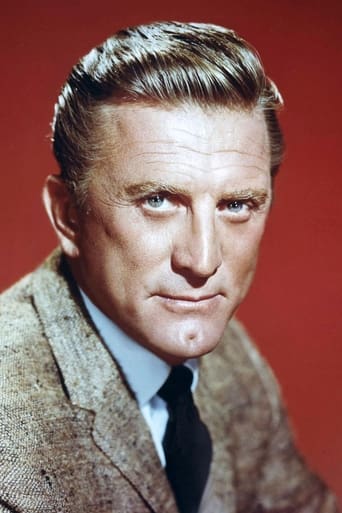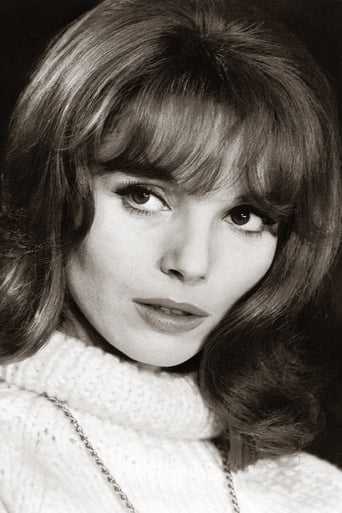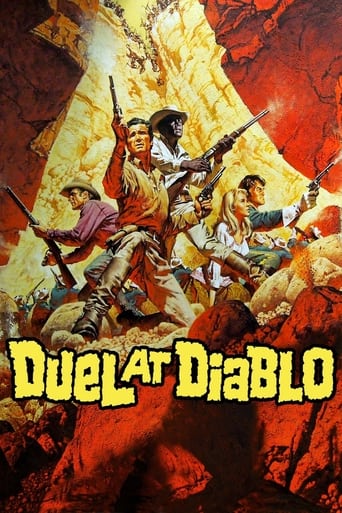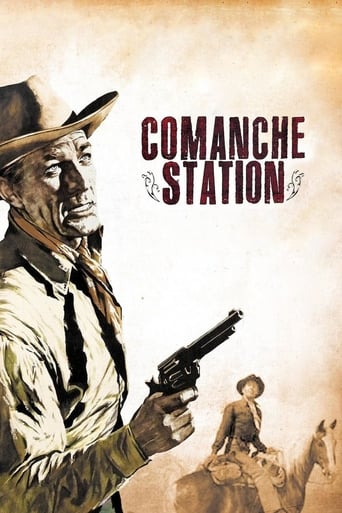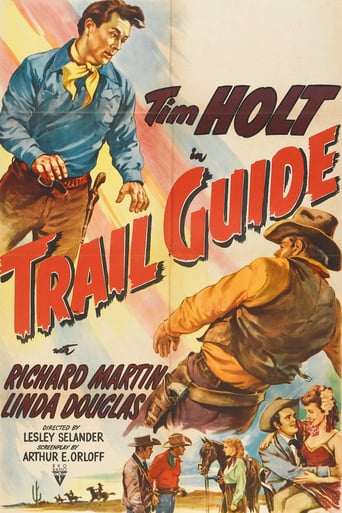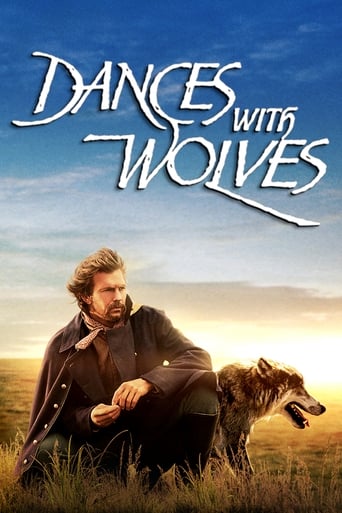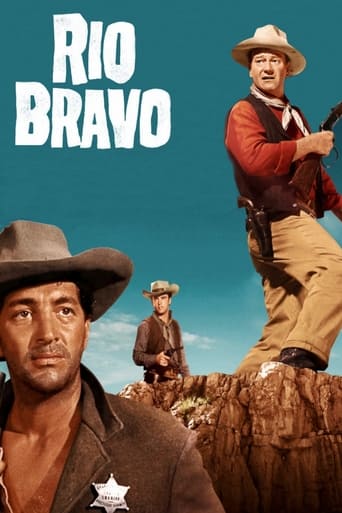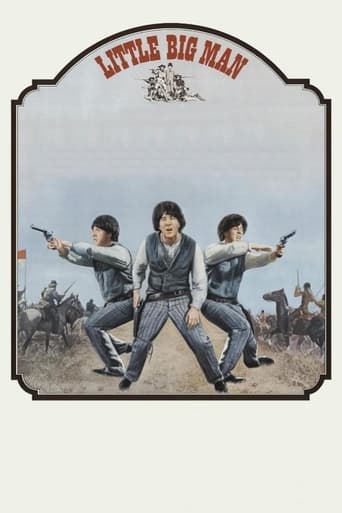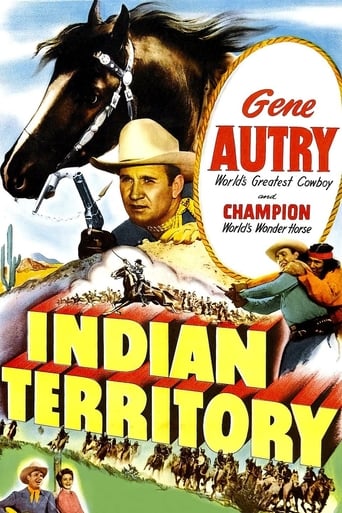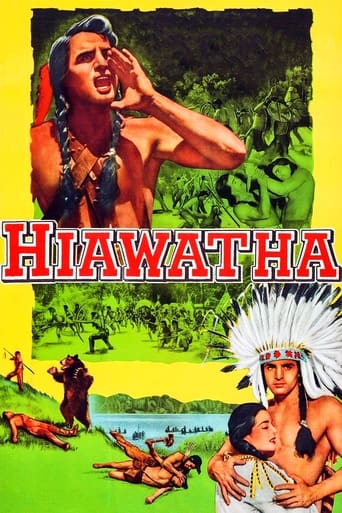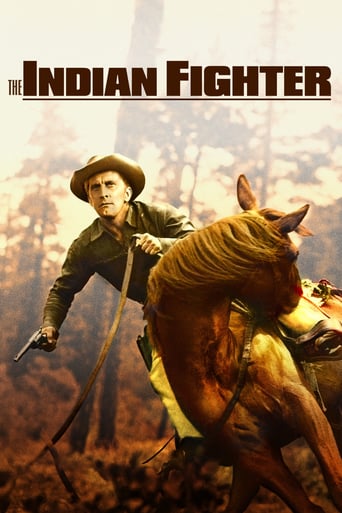
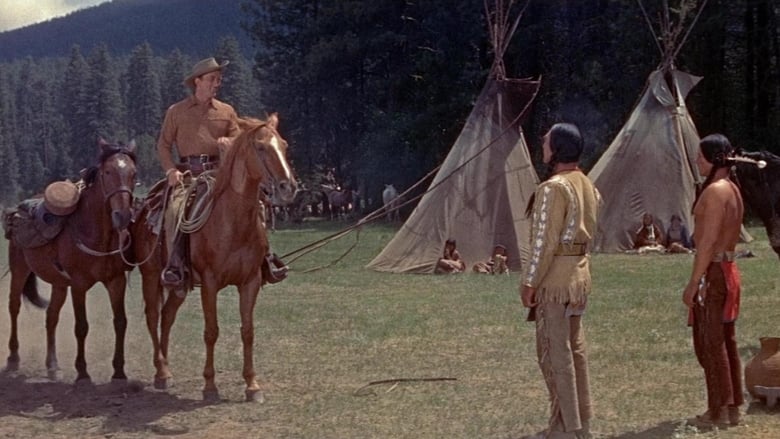
The Indian Fighter (1955)
A scout leading a wagon train through hostile Indian country gets involved with a Sioux chief's daughter.
Watch Trailer
Cast


Similar titles
Reviews
This is an Odd Combination of Light Hearted Playfulness Punctuated with Plenty of Sex and Violence. Ramped Up Sex and Violence for the 1950's. it is Also Elevated by some Themes Only Found in the Best of the Genre until the Code was Eliminated.It has Social Concerns about the Environment and Treatment of the Indians. The Violence is Brutal at Times with some Very Bloody and Edgy Portrayals of Scalping, Knifing, and has One or Two Scenes that are Remarkable in the Aftermath of some Sioux Arrows.There is an Interracial Romance, Semi-Nudity, Rape, and an Attack on the Fort that shows the Intelligence and Resourcefulness of the Indians. There is also a Subplot about the New Invention of Photography and the Film's Cinematography is CinemaScope Sensuous. Some Drawbacks Include Weak White Bad Guys, another 1950 Inclination to have an Obligatory Whiny Kid, and a Intrusive Score from Frank Waxman. Overall, Above Average, Cutting Edge, and Entertaining. Recommended for Western Buffs and this would Fit in Nicely for Fans and Followers of Anthony Mann, Budd Boetticher, and Sam Fuller.
This is an action packed western with lots of adventure and fun.More than that, it gives the viewer three great stars-Douglas, Mattheau, and Chaney in a western conflict.Douglas plays the hero, the Indian Fighter, which is itself ironic, since he really tries to battle for the Indians, whom are depicted much more honorably than the whites in this movie, as they are in most movies of the era, despite popular belief.Mattheau and Chaney play two bad guys who take advantage of the Indians. Mattheau is the sneaky one who gains the trust of people, and for a while tricks people into caring. Chaney is the dumber thug, who it turns out is not nearly as despicable as Mattheau's character, and at least has some degree of honesty, but he's still a bad guy. Still, the true evil comes from Mattheau's character.Franz is stoic and brings the necessary sad honor to the chief Indian role. Hale and other great character actors make this an added delight.
Kirk Douglas turns in another of his wonderfully flamboyant performances as Johnny Hawks, `The Indian Fighter'. The movie is humorous and action picked. It even has a terrific performances from Diana Douglas, Kirk's ex-wife. However, for whatever reason, Kirk Douglas has populated his movie with some ridiculous casting choices: Eduard Franz as a Sioux chief(?), Harry Landers as Grey Eagle(??), Hank Worden as Crazy Bear(?!!!!?) and Elsa Martinelli as an Indian maiden(??!!!!!!!???). The first time Martinelli delivers that thick Italian accents, I started giggling. Come on, Kirk; you produced this. Couldn't you have found some REAL Indians, or at least an actress that didn't sound as if she's just come off the boat at Ellis Island. Hank Worden also plays a white character, making things seem even more ridiculous.Hey, my wife is Italian, so I wouldn't dare take cheap shots at Martinelli. Actually, when she keeps her mouth shut, Martinelli is pretty darn good. Had the script be rewritten so she only spoke Sioux, Martinelli would have been MUCH more believable. Oh well.To it's credit, the movie neither exploits or downplays the interracial relationship between Douglas and Martinelli. That's daring and commendable on the part of producer Douglas, particularly given the era of both the story and race relations in 50s America.No one seems to have commented on the Douglas-Martinelli courting ritual. It looks more like rape than romance. I thought feminist reviewers would be outraged. However, I've been told this ritual was common among the Plains Indians, though it is not clear to me whether this applies to the Sioux. Some comments should be made about the performances of Walter Matthau and Lon Chaney. Matthau comes across as WAY too contemporary and Chaney still seems to be playing Lenny from `Of Mice and Men'. Elisha Cook seems to have wandered over from the set of `Shane.' Nonetheless, Cook is still pretty watchable. Michael Winkelman (`The Real McCoys'), who played Diana Douglas's son, is terrific.The Technicolor photography is very good, the editing only OK. For example, the wagon train has traveled at least one full day, but seems to get back to the fort in a couple of minutes. The Oregon landscapes are spectacular.Given its shortcomings, `The Indian Fighter is STILL a pretty decent western. I give it a weak `6'.
At the heart of De Toth's oeuvre lies an interesting contradiction. He has an abiding interest in suspense, action, and the wellspring of violent events (a fact underlined by the number of thrillers, frontier yarns and dramas he helmed during his career), but, as a director, characteristically disassociates himself from their process. This 'distancing' effect has been noted by a number of viewers, creating some critical debate about De Toth's engagement with his material. In my view his detachment is not to be confused with aloofness - an interesting comparison can be made with Stanley Kubrick's alleged 'coldness' - but is rather De Toth's way of resolving what really 'matters'. It is this intelligence, revealing itself sharply in his best films, that makes him such a worthwhile study. Along with De Toth's assured debut 'Ramrod' (1947) and the austere 'Day of the Outlaw' (1959), 'The Indian Fighter' is probably the finest of his Western films, revealing a characteristic response to the demands of the genre. In 'Ramrod' the moral questing springs from a noirish plot that is unsettled and full of tension. In 'Day of the Outlaw' issues are resolved more formally, played out against the stark landscape of Winter. In 'The Indian Fighter', De Toth's concerns manifest themselves in his most lyrical and sensuous work. He thereby creates a film which, in emphasis, is in direct contrast to most other 50's Westerns.This is ostensibly a tale of a famous frontiersman Johnny Hawks (played with usual lusty gusto by Kirk Douglas), back from the wars. Ultimately he has to redeem his reputation, discovering balance within the indigenous people he has previously warred against. Gold has been discovered on Indian land, and the bad guys (a marvellous performance by Walter Matthau, ably supported by Lon Chaney, Jnr) are out to kill and cheat to secure the riches. This, and the related fear of a tribal uprising, provide the main action point of the film. As the Indian fighter of the title, ironically the first thing we notice about Hawks is his reticence. In fact he hardly fights at all - only when he is obliged, or when called upon to at the climax of the film. For him, combat is not a prerequisite, although he is not slow to react when needs be. A comparison with the bitterness of Ethan Edwards, say, in Ford's 'The Searchers' is revealing. Edwards loathes the Commanches, with a bitterness entirely absence from De Toth's hero. As Hawks' opponents observe, he is more of an Indian lover than fighter. And, of course, in the most obvious way, they are right. Almost more important to the hero than his professional reputation is his preoccupation with the Indian maid Onhati. His single-minded pursuit, and later dalliance, with her initiates the main crisis of the film, as he leaves the wagon train to be by her side, after taking it 'two days out of my way and half way up a mountain'.This is a film full of sensuality, placed in contrast to 'duty', the calling of action. We are constantly reminded of the cool pools, green foliage, closeness of the earth, just as much as of the teachery and turmoil of the frontier. Franz Waxman's score is lyrical and evocative, frequently idyllic. The glorious cinematography gives nature's perpetual garden a pantheistic gloss, sometimes intense, and always resplendent. Just as the main film captures these images, so in mimicry does Briggs, a supposed protégé of civil war photographer Matthew Brady, who frequently accompanies Hawks. He is eager to capture the grandeur around him. His camera is as significant to us as it is to Hawks, who makes a point of rescuing it at one point (during the battle at the fort). An important minor character, Briggs emphasises the appreciation of the sublime and beautiful that the film invites. A couple of times De Toth pauses the action (once at the fort and then at the wagon train), to pan his camera for long seconds along sets and people, recording their place in the Oregon landscape. Like Briggs he wants to admire, and record.A circular film, 'The Indian Fighter' begins with Hawks gazing at Onhati bathing naked in a pool. It ends with him joining her in the water, forming a happy couple. The whole world of action is thus enclosed by their bonding, their sensual preoccupation usurping the violent demands of Indian-white conflict. The scenes between the two lovers caused a murmur at the time. Considered 'risque' for the conservative 50's Western, De Toth simply inserted them, and their sexual self-absorption, as entirely fitting his plan of things. What is more eyebrow-raising today is how he allowed the encounters between two lovers to backstage the expected intrigues of masculine action, and actually assume greater significance, reversing regular audience expectations. This stress, an essentially feminine one. is completely uncharacteristic of the Western at this time. Add to that a sympathetic view of Indians and nature conservation (the Indian Chief's environmental concerns are a main reason for his refusing to exploit the land with mining) and you have an excellent film - a career highlight of this greatly underrated director.


